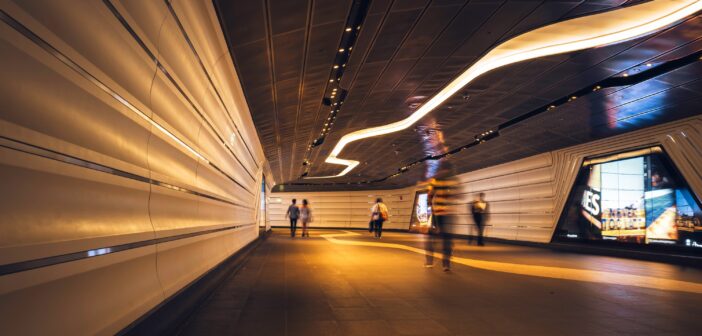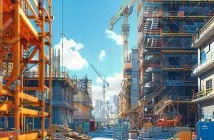In the heart of the Saudi desert, a global project is taking shape. It defines the contours of the urban future: The Line, within NEOM, the city of the future. This ambitious vision, carried by the Kingdom of Saudi Arabia, arouses considerable interest both for its innovations and for the challenges it raises. This city, designed to be free of cars and polluting emissions, promises a remarkable urban revolution. Here are the major challenges of The Line project.
Plan de l'article
Major issues
The Line Saudi Vision 2030 NEOM project is structured around several major issues. The most prominent concerns environmental sustainability. Indeed, the city aims to be carbon neutral. It therefore plans to use only renewable energies to preserve 95% of the surrounding nature.
A lire également : Les avantages du chauffage par pompe à chaleur pour votre domicile
Next, The promotes exceptional technological innovation in which artificial intelligence, hyper-rapid transportation and intelligent urban management solutions will be highly integrated.
In addition, this program aims to guarantee an unparalleled quality of life for residents by promising easy access to all essential services (education, health, leisure).
A lire également : Comment savoir à qui appartient la clôture ?
How will The Line project unfold?
The Line project is not just a city, it is a revolutionary ecological megalopolis. Its ambition: to offer a unique way of life to populations.
We glimpse a city of several km divided into distinct zones dedicated to life, work and leisure. A living environment where underground infrastructure takes care of transport and energy supply, leaving the surface free for pedestrians and social interactions. The Line is designed to promote mobility, connectivity and the well-being of its residents.
This ambitious project will take place in several phases. The first phase will focus on the construction of basic infrastructure and the first residential neighborhoods. The completion of the linear city and the development of hyper-rapid transportation are planned for the second phase. The final phase, from 2030, will see the expansion of the city and the integration of new urban technologies.
What are the technological challenges of the project?
The scale of The Line project involves considerable technological challenges. The city will be powered entirely by renewable energy. It will therefore be necessary to plan for major advances in the field of energy production and storage. In addition, smart and connected infrastructure will be at the heart of how the city functions. This is a fundamental provision for requiring innovations in cybersecurity and data management.
Designing sustainable and resilient buildings in the face of extreme desert climate conditions also represents a major challenge. Green building technologies and resource management systems will therefore be essential to ensure the long-term viability of The Line.
What are the tourism challenges of The Line project?
In addition to its technologically innovative aspect, The Line also aims to become a leading tourist destination. Its privileged location, between sea and desert, offers a spectacular natural setting, conducive to the development of varied tourist activities.
High-end hotel infrastructure, leisure and entertainment areas, as well as cultural sites will be developed along the line. This will definitely attract visitors from all over the world. In addition, the city promises a unique experience, a true fusion between modernity and respect for the environment, which will make it a popular destination for ecotourism enthusiasts.
What are the prospects for investors?
The Line project offers unprecedented investment opportunities in the sustainable urban planning sector. Innovative companies in the fields of technology, sustainable construction, renewable energies and tourism are particularly in demand to participate in the creation of this city of the future.
Investors can also turn to the construction of residential projects in NEOM, which will benefit from the economic and demographic growth induced by the creation of The Line. In addition, the construction of NEOM’s first airport in 2024 opens new prospects for investments in transport and logistics infrastructure.
Conclusion
NEOM’s The Line project represents a bold bet for the future of cities. Its success will depend on its ability to meet technological challenges and attract investors and talent. If successful, The Line could become a model sustainable and innovative city for the entire world.




